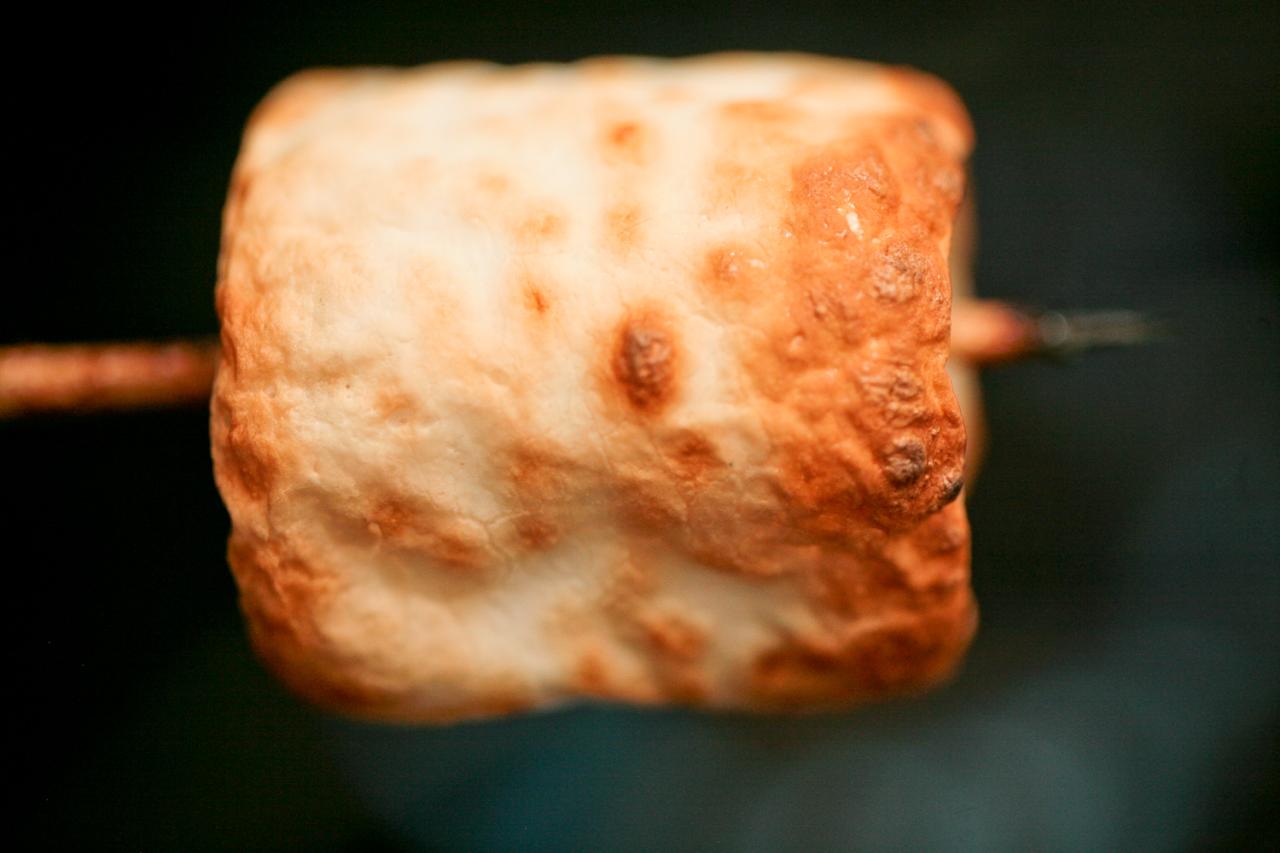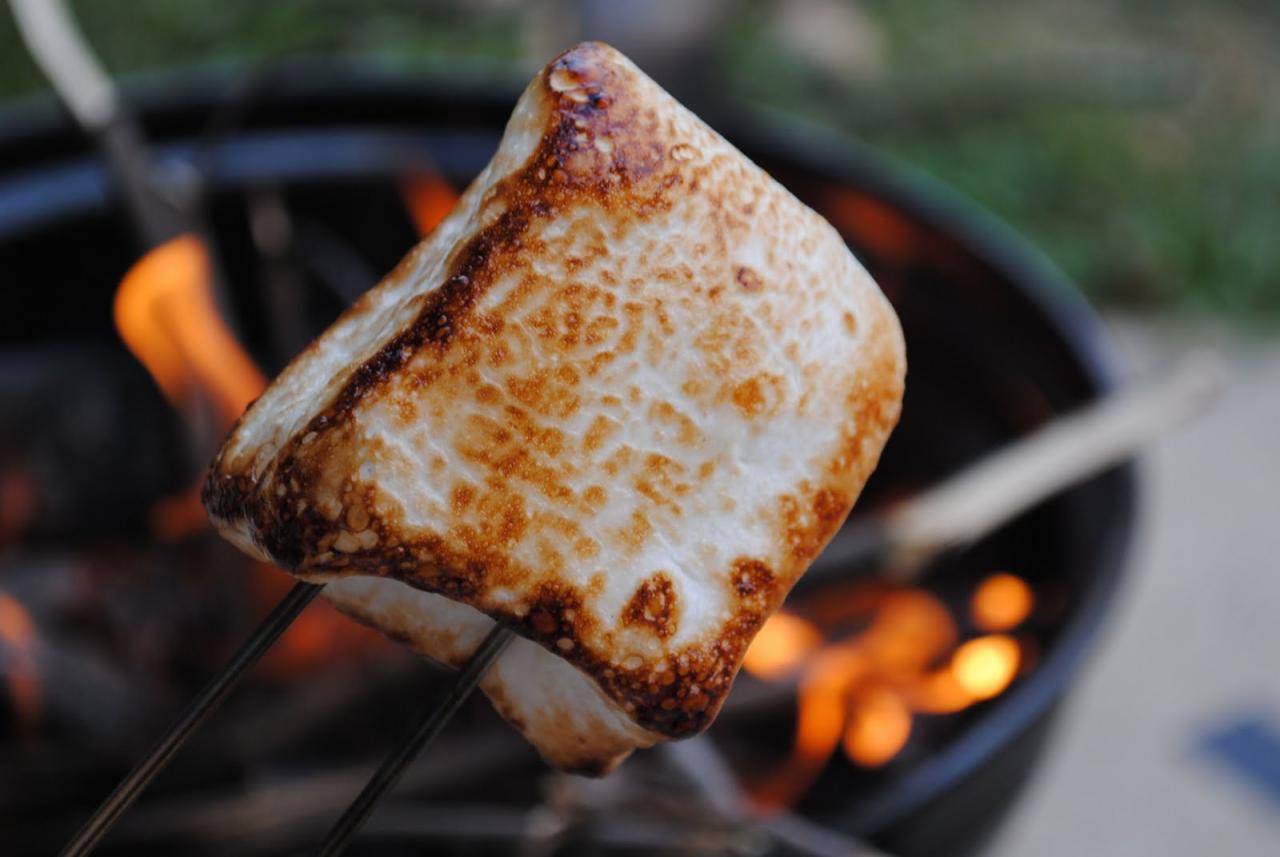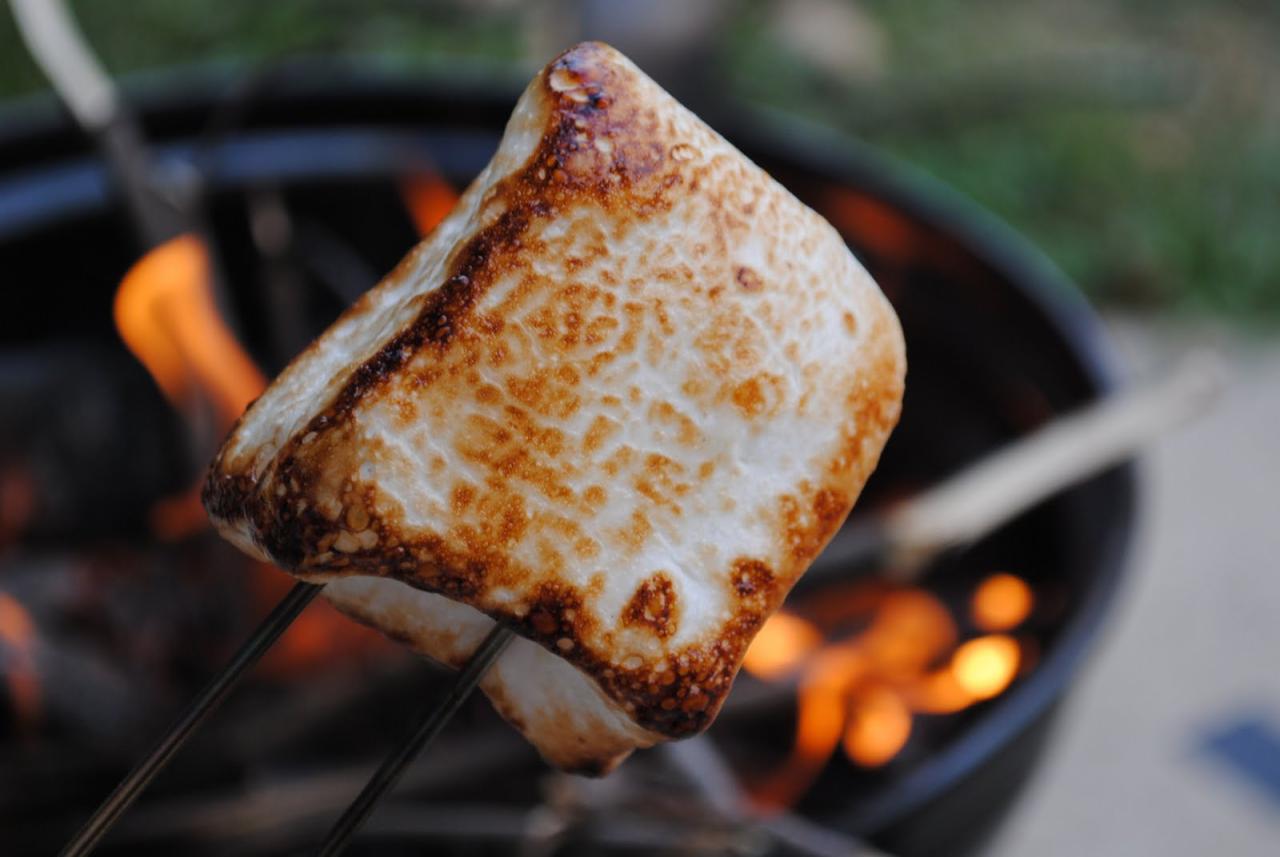Like the texture of a roasted marshmallow, this article delves into the unique sensory characteristics and culinary applications of this beloved treat. From its soft, yielding nature to its crispy exterior and fluffy interior, marshmallows offer a delightful contrast that enhances countless dishes.
In this exploration, we’ll uncover the scientific secrets behind marshmallows’ distinctive qualities and discover how their chemical composition contributes to their irresistible texture. We’ll also delve into the art of roasting marshmallows, examining how this process transforms their texture and unlocks their full flavor potential.
Sensory Characteristics

Roasted marshmallows possess a captivating textural symphony that tantalizes the senses. Their exteriors, kissed by the flames, develop a delicate crispiness that yields to a pillowy-soft interior, creating a captivating contrast.
Exterior Texture
The outer layer of a roasted marshmallow forms a thin, golden-brown crust. This crispy shell provides a satisfying crunch upon the first bite, hinting at the delectable softness within.
Interior Texture
In contrast to its crispy exterior, the interior of a roasted marshmallow is an ethereal delight. It yields effortlessly to the slightest pressure, revealing a fluffy, cloud-like texture that melts in the mouth. This soft, yielding nature creates a sensation of pure indulgence.
Culinary Applications
Roasted marshmallows, with their pillowy-soft texture and smoky sweetness, have become an indispensable ingredient in the culinary world. Their versatility extends beyond the campfire, offering a unique culinary canvas for enhancing dishes.
The smoky sweetness of roasted marshmallows complements a variety of flavors, making them a welcome addition to both sweet and savory dishes. They can be used to create a delightful contrast in texture and flavor, adding a touch of whimsy to any culinary creation.
S’mores
S’mores, the quintessential campfire treat, combine the perfect balance of textures and flavors. Roasted marshmallows, melted chocolate, and graham crackers create a harmonious symphony of sweetness and crunch.
Rocky Road
Rocky road, a classic confection, features roasted marshmallows as a key ingredient. The combination of marshmallows, chocolate, nuts, and fruit creates a delectable treat that satisfies both sweet and savory cravings.
Marshmallow Fluff, Like the texture of a roasted marshmallow
Marshmallow fluff, a whipped marshmallow spread, adds a light and airy texture to various dishes. It can be used as a topping for pies and cakes, or as a filling for sandwiches and cupcakes, adding a touch of sweetness and a unique marshmallowy flavor.
Baking and Confectionery
Roasted marshmallows find their place in baking and confectionery as well. They can be used to create marshmallow-based cakes, cookies, and other treats, adding a unique texture and flavor profile.
Scientific Analysis: Like The Texture Of A Roasted Marshmallow

Marshmallows, beloved for their fluffy texture and sweet taste, are the result of a unique combination of ingredients and a specific preparation process. Understanding their chemical composition and the role of each component is essential to appreciating the science behind their distinctive texture.
The primary ingredients in marshmallows are sugar, gelatin, and air. Sugar provides the sweetness and structure, while gelatin acts as a gelling agent, creating the marshmallow’s chewy texture. Air, incorporated during the whipping process, gives marshmallows their characteristic lightness and fluffiness.
Sugar
Sugar plays a crucial role in determining the texture of marshmallows. It provides sweetness, but also contributes to their chewy texture. When sugar is heated, it undergoes a process called caramelization, which involves the breaking down of sugar molecules and the formation of new compounds.
These new compounds contribute to the marshmallow’s slightly crispy exterior and chewy interior.
Gelatin
Gelatin is a protein derived from animal collagen. It is responsible for the marshmallow’s chewy texture. When gelatin is heated in water, it dissolves and forms a gel-like substance. As the marshmallow cools, the gelatin network solidifies, giving it its characteristic texture.
Air
Air is incorporated into marshmallows during the whipping process. This creates tiny air pockets throughout the marshmallow, giving it its light and fluffy texture. The amount of air whipped into the marshmallow will affect its density and softness.
Roasting Marshmallows
Roasting marshmallows over a fire or heat source adds a unique dimension to their texture. The heat causes the sugars in the marshmallow to caramelize further, creating a crispy, golden-brown exterior. The interior of the marshmallow remains soft and chewy, creating a delightful contrast in texture.
Outcome Summary
From the campfire to the kitchen, marshmallows have captivated our taste buds for generations. Their unique texture, a symphony of soft and crispy, has made them a culinary icon. Whether enjoyed on their own, incorporated into s’mores, or transformed into delectable desserts, marshmallows continue to delight and inspire.
FAQs
What gives marshmallows their unique texture?
Marshmallows owe their distinctive texture to a combination of sugar, gelatin, and air. The sugar provides sweetness and structure, while the gelatin creates a flexible, elastic network that traps air bubbles. When roasted, the exterior caramelizes, creating a crispy crust, while the interior remains soft and fluffy.
How do you achieve the perfect roasted marshmallow?
To achieve the perfect roasted marshmallow, hold it over a steady flame until the exterior turns golden brown and slightly charred. Rotate the marshmallow frequently to ensure even roasting. Once the exterior is crispy, remove the marshmallow from the heat and let it cool slightly before enjoying its gooey, melted interior.
Can marshmallows be used in baking?
Yes, marshmallows can be used in baking to add sweetness, texture, and moisture. They can be melted and incorporated into batters or doughs, or used as a topping for cakes, cookies, and pies. Marshmallows also make a delicious filling for cupcakes and other treats.

